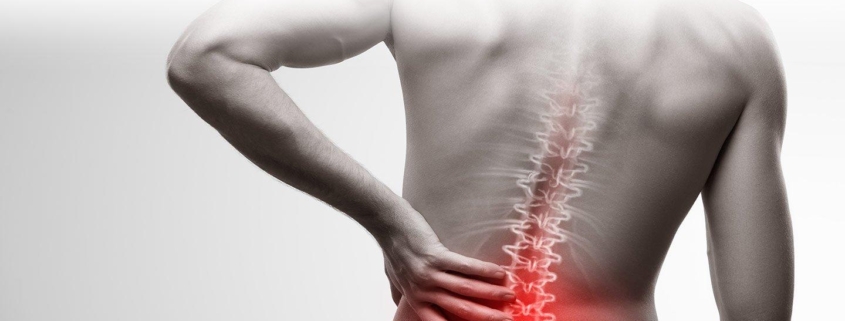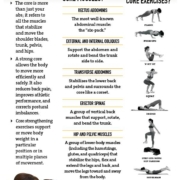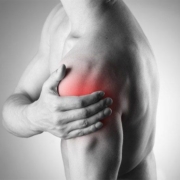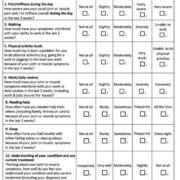5 Essential Questions to Ask Your Doctor About Back Pain
Back pain is a common ailment that affects millions of people, often leaving them feeling frustrated and searching for answers. Whether it’s a dull ache that lingers or a sharp pain that interrupts daily activities, understanding the root cause of your discomfort is crucial. However, navigating the complexities of medical advice can be daunting. That’s why asking the right questions during your doctor’s visit is essential. In this listicle, we’ll explore 5 essential questions to ask your doctor about back pain. By the end, you’ll be equipped with the knowledge to engage in a more productive conversation with your healthcare provider, helping you uncover valuable insights about your condition, treatment options, and preventive measures. Say goodbye to uncertainty and hello to informed discussions about your back health!
1) What could be causing my back pain? Understanding the root cause is crucial for effective treatment. Whether it’s a muscle strain, herniated disc, or something else, knowing the underlying issue helps in planning the right approach
Back pain can stem from a variety of factors, making it essential to pinpoint the root cause for effective treatment. Common culprits include muscle strains, which often result from overexertion or improper lifting techniques. Other potential issues include herniated discs, where the cushioning discs between your vertebrae become damaged and press on nearby nerves, leading to pain and discomfort. Additionally, conditions such as arthritis and sciatica can contribute to chronic back pain, affecting mobility and quality of life.
To better understand your specific situation, consider discussing the following with your doctor:
- What is the exact diagnosis? Knowing the specific condition can guide treatment options.
- What are the potential causes of my back pain? This helps in understanding lifestyle or activity adjustments needed.
- Are there any imaging tests required? X-rays or MRIs can provide insight into structural issues.
- What treatment options do you recommend? Knowing whether physical therapy, medication, or surgery is needed can ease concerns.
- How long should I expect recovery to take? Understanding the timeline can help manage expectations and planning.
2) What treatment options are available for my condition? From physical therapy to medication or even surgery, discussing the spectrum of treatments can empower you to make informed decisions about your care
When it comes to managing back pain, understanding the range of available treatment options can significantly impact your recovery journey. Your doctor may recommend a combination of therapies tailored to your specific condition and lifestyle. Here are some common approaches:
- Physical Therapy: Engaging in targeted exercises can strengthen your back muscles, improve flexibility, and enhance posture.
- Medication: Over-the-counter pain relievers or prescription medications can help alleviate discomfort and reduce inflammation.
- Chiropractic Care: Adjustments made by a chiropractor can realign the spine and relieve pressure on nerves.
- Injections: Corticosteroid injections can provide temporary relief by reducing inflammation around the affected nerve roots.
- Surgery: In severe cases, surgical options such as discectomy or spinal fusion may be necessary to correct structural issues.
It’s crucial to have an open dialogue with your healthcare provider about these options. Consider discussing the potential benefits and risks associated with each treatment. To help you visualize your choices, here’s a simplified comparison of treatment types:
| Treatment Type | Benefits | Considerations |
|---|---|---|
| Physical Therapy | Improves strength and flexibility | Requires commitment and time |
| Medication | Quick pain relief | Possible side effects |
| Chiropractic Care | Non-invasive treatment | Not suitable for all conditions |
| Injections | Targeted pain relief | Temporary solution, not a cure |
| Surgery | Corrects structural issues | Involves recovery time and risks |
3) How can I manage my back pain at home? Your doctor can provide valuable advice on self-care strategies, including exercises, stretches, and lifestyle modifications that can alleviate pain and improve your quality of life
Managing back pain at home can be an integral part of your recovery process. Your doctor may recommend a variety of self-care strategies tailored to your specific condition. Here are some effective methods to consider:
- Gentle Exercises: Incorporating low-impact activities such as walking, swimming, or cycling can help strengthen your back muscles without causing further strain.
- Stretching Routines: Simple stretches focusing on the lower back, hamstrings, and hip flexors can improve flexibility and alleviate tension.
- Heat and Cold Therapy: Applying a heating pad or ice pack can reduce inflammation and provide immediate relief.
- Posture Awareness: Maintaining good posture while sitting, standing, or lifting can prevent exacerbation of pain.
- Lifestyle Modifications: Consider adjusting your daily activities, such as taking frequent breaks during prolonged sitting or using ergonomic furniture.
In addition to these strategies, your doctor may suggest a personalized exercise program that fits your lifestyle and pain levels. Here’s a simple table outlining common exercises and their benefits:
| Exercise | Benefit |
|---|---|
| Cat-Cow Stretch | Improves flexibility and reduces tension in the spine. |
| Child’s Pose | Stretches the back and promotes relaxation. |
| Bridges | Strengthens the glutes and lower back muscles. |
| Pelvic Tilts | Enhances core strength and stabilizes the spine. |
4) Are there any activities or movements I should avoid? Knowing which actions can exacerbate your back pain is essential. Your doctor can guide you on modifications to your daily routine to prevent further injury
Understanding which activities can aggravate your back pain is crucial for your recovery. Your doctor can provide personalized advice, but some common movements to be cautious about include:
- Heavy lifting: Avoid lifting objects that are too heavy or awkwardly shaped, as this can strain your back.
- Twisting motions: Sudden twisting can lead to injury, especially if your back is already vulnerable.
- Prolonged sitting: Sitting for extended periods can increase pressure on your spine, so take regular breaks to stand and stretch.
- High-impact exercises: Activities like running or jumping may worsen pain; consider low-impact alternatives instead.
Additionally, it’s important to recognize your body’s signals. If you experience pain during specific movements, it’s best to avoid them until you’ve consulted with your doctor. Here’s a simple table to help you identify activities to steer clear of:
| Activity | Reason to Avoid |
|---|---|
| Weightlifting | Can strain back muscles and discs. |
| Yoga poses with deep twists | May put excess pressure on your spine. |
| High-intensity sports | Risk of sudden movements that can cause injury. |
| Long-distance driving | Prolonged sitting can worsen discomfort. |
5) When should I consider seeing a specialist? If your back pain persists despite treatment, it might be time to consult a specialist. Your doctor can help you determine the right time to seek additional expertise for your condition
If your back pain continues despite undergoing various treatments, it may be time to seek the expertise of a specialist. Chronic pain can be a complex issue that often requires a deeper understanding of underlying conditions. A specialist, such as an orthopedist, neurologist, or pain management expert, can provide a comprehensive evaluation and advanced diagnostic techniques. They can help identify specific issues such as herniated discs, spinal stenosis, or other conditions that may not have been addressed by general treatments.
When considering a consultation with a specialist, keep in mind the following factors:
- Duration of Pain: If your back pain has persisted for more than a few weeks.
- Severity: If the pain is severe enough to affect daily activities or quality of life.
- Progression: If your symptoms are worsening over time.
- Other Symptoms: If you experience additional symptoms such as numbness, tingling, or weakness in your legs.
- Previous Treatments: If you’ve tried multiple treatments without significant improvement.
Consulting a specialist can open up new avenues for treatment and management. Here’s a quick comparison of specialists you might consider:
| Specialist | Focus Area | Typical Treatments |
|---|---|---|
| Orthopedic Surgeon | Musculoskeletal issues | Surgery, physical therapy |
| Neurologist | Nerve-related conditions | Medication, nerve blocks |
| Pain Management Specialist | Chronic pain management | Injections, alternative therapies |
The Conclusion
As you embark on your journey to better back health, remember that communication is key. By asking these five essential questions, you empower yourself to take an active role in your treatment and management of back pain. Your doctor is your partner in this process, and together, you can explore the best options tailored to your unique situation.
Whether it’s understanding the underlying causes, discussing potential treatments, or considering lifestyle changes, each question opens the door to valuable insights. Don’t hesitate to voice your concerns and seek clarity—after all, your well-being is worth the conversation.
So, the next time you find yourself in the doctor’s office, take a deep breath, and confidently engage in a dialogue that could lead you to a healthier, pain-free life. Here’s to informed decisions and a stronger, more resilient back!










Leave a Reply
Want to join the discussion?Feel free to contribute!